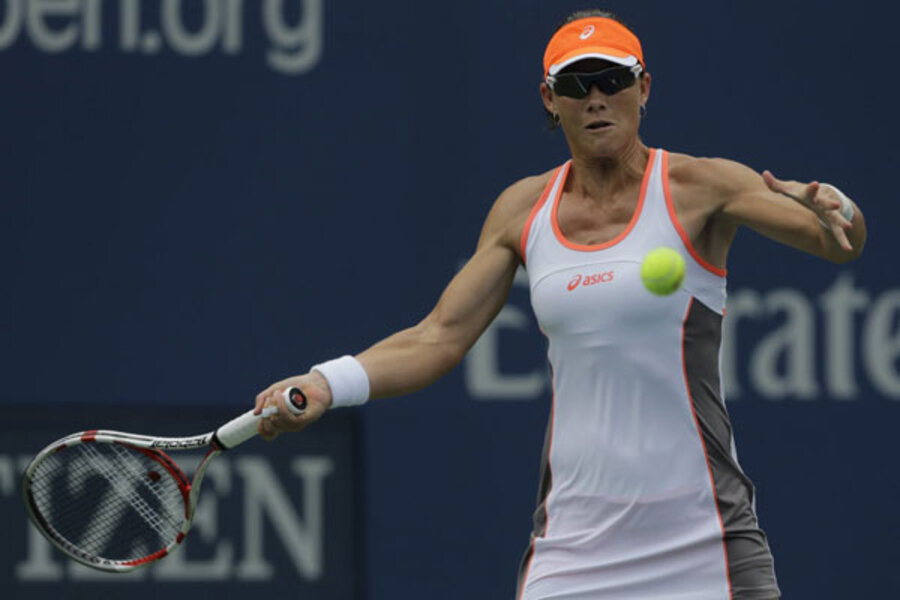US Open: Samantha Stosur's road to a repeat starts here
Loading...
| NEW YORK
None of this quite makes sense to Samantha Stosur. There she was, center stage in the biggest tennis stadium in the world, taking on one of the game's most intimidating players, and making it look so easy.
But in so many ways, that 6-2, 6-3 victory over Serena Williams in the U.S. Open feels as if it happened much more than a year ago.
So far in 2012, Stosur has lost in the first round in front of the home fans at the Australian Open. She has lost in the second round at Wimbledon, then again in the first round at the London Olympics.
Sandwiched in between, she made a run to the semifinals of the French Open, but fell apart by committing 21 of her 48 unforced errors during an ugly third-set loss to Sara Errani.
The questions that came up after all these losses: Did nerves get to her? Quite a strange thing to ask given the setting and the opponent for her first Grand Slam final victory last year.
"I think everyone suffers from nerves," Stosur said. "Sometimes, certain people make a bigger deal about it than what it is. It depends on what you're talking about. I don't think you'd find anyone who doesn't get a little bit nervous. It's just how you handle it. The more you get through it, the better you get at handling situations."
Stosur, seeded seventh this year, kicked off the tournament Monday as defending champion, playing the day's first match in Arthur Ashe Stadium against 64th-ranked Petra Martic of Croatia.
Despite her status as defending champion, Stosur is not considered one of the favorites coming into Flushing Meadows this year.
British sports books have her listed at 28-1 to repeat, same as Venus Williams, who has a 1-2 record in Grand Slams in 2012, and behind No. 4 seed Serena Williams, No. 3 Maria Sharapova, No. 1 Victoria Azarenka and four others.
"It is what it is," Stosur said. "It's fine whether you're talked of as being the favorite or not. At this point during the tournament, it doesn't really matter. Everyone is starting from scratch, and obviously things become clearer as the weeks go on."
Other players starting Monday include third-seeded Andy Murray of Britain, coming off his Olympic gold medal at the London Olympics. He faces Alex Bogomolov Jr. of Russia. Top-seeded Roger Federer plays American Donald Young in the night session.
Also playing in Arthur Ashe Stadium are No. 3 Maria Sharapova, against Melinda Czink of Hungary, and No. 23 Kim Clijsters, opening the final tournament of her career with a first-round match against American Victoria Duval. Clijsters missed last year with an injury, but has won the tournament the past three times she's entered — in 2005, 2009 and 2010.
"Obviously, this place is magical for me," Clijsters said. "I've had so many beautiful memories."
The Williams sisters, No. 2 Novak Djokovic and No. 20 Andy Roddick, the 2003 champion, are among those who start later in the week.







